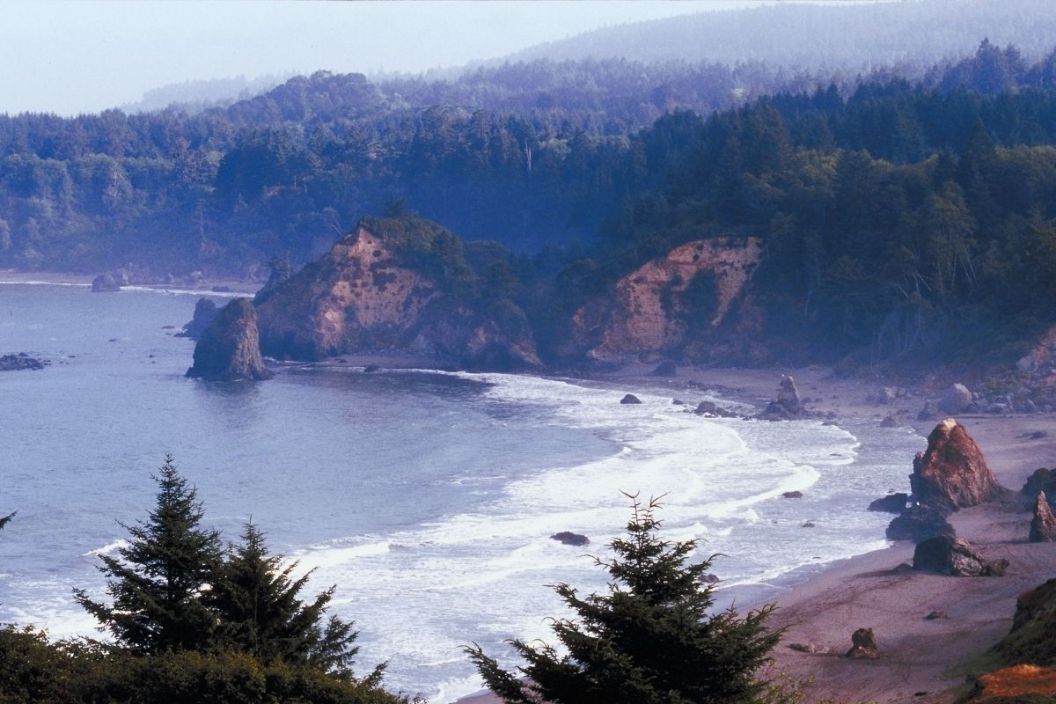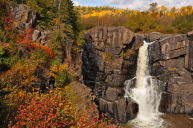In California, the movement "Reexamining Our Past Initiative" was started in September 2020 to address the discriminatory names of state parks, monuments, and public transportation systems within the state. Working with the Tribal Affairs Program, California State Parks is identifying and rectifying the derogatory names of features and places that are of concern to the California Native American tribes.
First on this list is Patrick's Point State Park in Humboldt County.
History of Patrick's Point State Park
https://www.instagram.com/p/CSwwM-dls0i/
Patrick's Point SP is an area that has been timelessly used and inhabited by the Yurok people. According to the press release, "Yurok people built villages along the coast and major waterways as well as tended, fished, hunted, and harvested a wide variety of plant and animal species throughout their ancestral lands." When acquired by California State Parks back in 1930, it was named in reference to the mid-1800s Irish homesteader Patrick Beegan, who apparently claimed the land while allegedly murdering Native Americans who originally lived there.
But as of Thursday, September 30, 2021, the proposal to change the name of the park to the Sue-meg State Park as a request from the Yurok tribe will be officially submitted.
"In 1850, when gold was found in the interior of California, the Yurok people suffered from violence, exploitation, dispossession, and the attempted destruction of Yurok communities by an influx of Euro-American settlers and deleterious federal and state policies. The Yurok people resisted, survived, and carried on cultural and linguistic traditions. The Yurok people still live in relationship with their ancestral lands."
Things to Do at the Park
RELATED: Walk Among Giants at California's Humboldt Redwood National and State Park
Located at 4150 Patricks Point Drive, Trinidad, CA 95570, on the coast of Northern California about 25 miles north of Eureka and 46 miles south of Crescent City, Patrick's Point State Park resides in the heart of California's coastal redwood country. The park sits on a lush promontory next to the Pacific Ocean, where visitors can look for agates, tidepools, sea lions, and much more. Apart from its name, the park also presents many cultural assets of the Yurok people, including a visitor center, native plant garden, and reconstructed Yurok plank-house settlement called Sumeg Village.
The state park is a great place to visit no matter how much time you have. With hiking trails of all kinds, you'll have plenty of sights to behold. If you have only half a day, take the spectacular two-mile long Rim Trail, starting at the Palmer's Point trailhead and ending at Agate Beach for the most amazing West Coast ocean views. Or if you want to camp overnight, you have three campsites to choose from: Penn Creek Campground, Abalone Campground, and Agate Beach Campground. Between the 120 family campsites, each has a table and a fire pit, as well as water faucets, restrooms, and coin-operated showers nearby.
Because of COVID-19 restrictions, the park is only partially open and reservations must be made in order to camp. Campers can go to http://www.parks.ca.gov/patrickspoint or http://www.reservecalifornia.com/ to make reservations. If you have a bigger group, check out the Beach Creek and Red Alder Group Camps that can accommodate up to 100 people. Those areas include a covered cook shelter, picnic tables, fire pits, spigot hookups, restrooms, and coin-operated showers. And in case you're planning for a short trip, there are also day-use options as well for you to explore.
What to See
https://www.youtube.com/watch?v=lnbX3A5KO8s
With generally mild weather all year round, Patrick's Point State Park offers many colorfully natural sights for visitors to intake along with its historical essence. At Palmer's Point, you'll find some of the richest and most diverse tide pools, along with purple shore crabs, limpets, ochre stars, and orange cup coral in the high and mid-intertidal zones and wine plum dorid, northern red anemone and sea clown nudibranch in the low intertidal zone.
Because the park is located in the state's redwood country, you can expect to encounter Sitka spruce, red alder, Douglas-fir, western hemlock, and shore pine along your hikes, as well as wildflowers such as salal, Douglas iris, fairy bells, trillium, skunk cabbage, and rhododendron.
And during the spring and fall, you might get lucky enough to watch the migration of gray whales at Wedding Rock, Patrick's Point, and Palmer's Point. As one of the world's outstanding wildlife spectacles, you'll witness one of life's many beautiful natural cycles as the gray whales make their way to and from Alaska and Baja California, the longest known annual migration of any mammal. And if you can't catch the gray whales, you can definitely count on seeing some seals and/or sea lions.
Have you ever seen the sights of Patrick's Point State Park? Share your experience with us on our Wide Open Roads Facebook!




